Category Archives for "19th Century Literature"
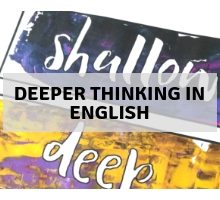
Do you want to help your students develop deep thinking skills? Then this blog post is for you. In it, I share 2 visual strategies for developing deep thinking skills.
Here’s the story of how I use “shallow, deep, profound” to help my students who struggled with creating deep and detailed analysis of the literature texts.
Real-talk time: my students really struggle with analysis. Any kind of analysis. Instead of analysis, my students tend to act as Google Translate. They take the language of our lit text and ‘Google Translate’ it into their own words. They think this is what I mean by analysis. Even when I model it. Or when we talk in detail about the connotations and implications in the language.
So for the last few months, I have been using the stages ‘shallow, deep, profound‘ to help them visualize moving their understanding to a more profound place. We walk through these steps to ensure their analytical is deep and detailed.

These 3 words “shallow, deep, profound” are the key. I have them printed, chopped up, laminated, and up on my wall. My students are so used to these terms now, that all I need to do is point to them and they get what I’m saying.
Here’s how I introduce and define the process for my classes:
Shallow – this is when you are just giving me a surface reading of the text. You are essentially re-wording the text into your own words or showing that you understand what it is about.
Deep – this is when you explore the deeper meaning suggested by the language, techniques, or structure. You read into the implied meaning behind the words. These are the connotations of the language.
Profound – this develops on your deep reading above (that’s the first step). You have explored already the connotations of the words used, now you consider how the author is shaping the readers’ thinking. How does it link to the themes in the text? How does it confirm or subvert accepted thinking?
If you like the idea of using “shallow, deep, profound” in your classroom – then all you need to do is click here to download a pdf with the colour and blackline versions of this file.
I think I must use these two words 100 times a day. My students are great at having ideas – but I have to push them to tell me why they decided on that particular idea, or to give me the evidence to justify it. This is where my “why” and “because” reminder cards come in!
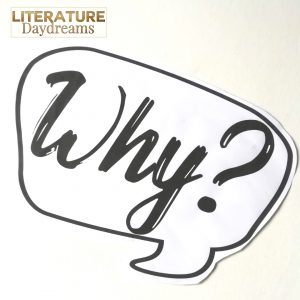
I have laminated these 2 words, enlarged to poster size, inside speech bubbles. I have them on my desk, ready to go! Sometimes I tack them to the wall, sometimes I wander around just holding them.
They are big and visible. Now I can just wave the laminates, point to them, even just nod in their direction, and my students know they have to develop their answers for me.
Why – why is important because you have to justify to me the reason you made that decision. What did the author do? Write a metaphor. Why? The word “why” in itself forces deeper thinking. What is the best idea we’ve had today? Why?
Because – teaching my students to use the word ‘because’ in their classroom dialogue and their analytical writing has been transformational. Just like moving from shallow to profound thinking – it forces them to move from the ‘what’ in a text to the ‘why’. It is the gateway to discussions concerning authorial intent, motivations, and purpose. The word ‘because’ nearly always follows a ‘why’ discussion, so it’s great to have on hand!
Again – if you like the idea of using these “why and because” prompts in your classroom, then all you need to do is click here to download the pdf file with them in.
If you love these teaching ideas – then sign up to receive two new ideas directly to your inbox every week!

Sign up below to receive regular emails from me jammed packed with ELA teaching tips, tricks and free resources. Also access my free resource library!
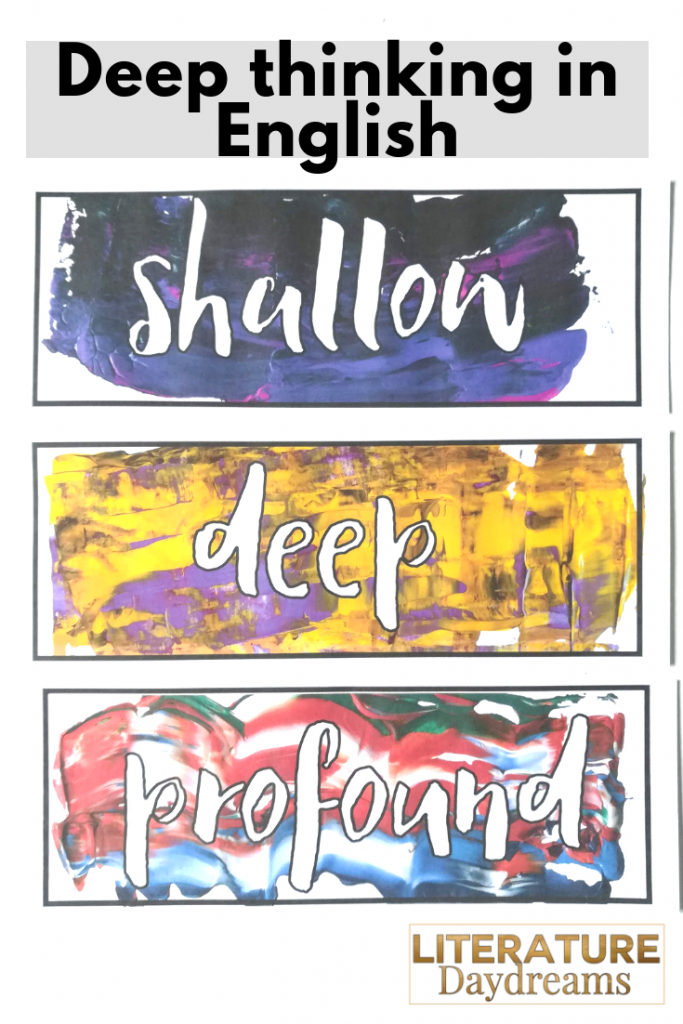
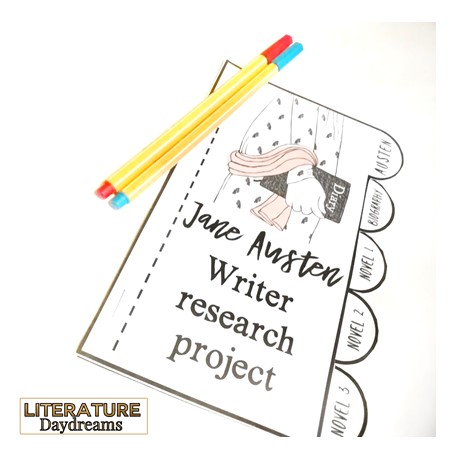
We all love a period drama don’t we? Well, you and I probably do. But your average teenager… Reading 19th century literature with classes presents us, as teachers, with a number of unique opportunities. It is at this moment that we are, probably, at our most multi-disciplinary. We are scientists – discovering electricity and inventing CPR. We are adventurers – seeking out the south pole and charting the North West Passage. We are theologians – struggling to believe in the Age of Enlightenment. We are historians – obsessed with the Classical Age, avoiding the present. We are politicians – fearing Revolution and rebellion. When I look at the 19th Century I see all the “old England” of smugglers, pirates, and highwayman and I also see all the “new England” of the factories, technology, and workhouses.
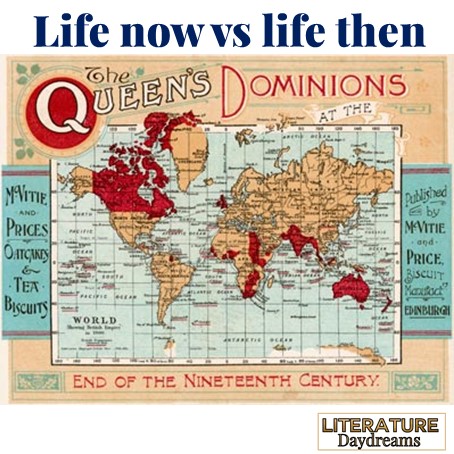 1. Starting at the beginning
1. Starting at the beginningBefore I even put a piece of 19th century literature in front of my students, I pose the question: “What is the difference between life today and life in 19th century?”. Generally, at first strike – I get only the obvious answers (people were dirty). The knowledge that my students have of history is limited. They can tell me loads about life in the workhouse, they can talk about factories. But beyond these specifics they are still in the dark. “History” says the historical novelist Dame Hilary Mantel “is what’s left in the sieve when the centuries have run through it”. The bits we pick out of the sieve to teach our younger students is pretty specific.
So what are the main differences we see:
Once we have made this list, it’s time to jump straight in and look at some writers. At this point – I might set my classes up with an author research study. Sometimes I find it is favourable for students to know in advance some of the historical and biographical details linked to a particular author. For Austen, Dickens, and Shelley, these are particular relevant.
We also tend to notice that while there are few narrative links between stories we read (A Christmas Carol -> Pride and Prejudice -> Frankenstein); we do come across the same ideas again and again. The abuse of power, the issues of social class, the treatment of the poor, the role of women in society. Each of these novels, in some way, speaks to these universal themes again and again.
Ok, so we’ve talked about the differences between now and then, we’ve met the author. We can’t put off reading the text any longer!
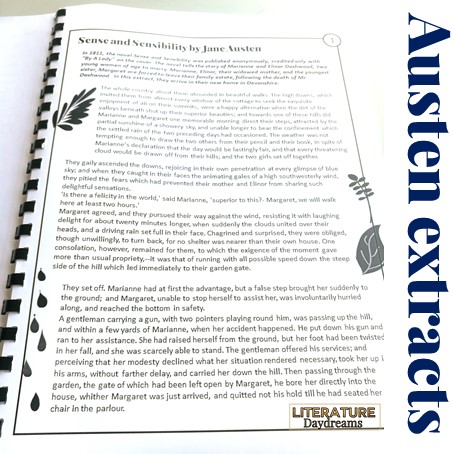
We also don’t always read full texts (shhhh don’t tell the writers!). There are some 19th century texts that our national curriculum and examination syllabi require us to study. But other than that we have free reign. However, given that many are 300+ pages and some have opening sentences that run to 100+ words, I don’t always decide to read entire novel. In fact this year, I have been teaching extracts only. Extracts from my favourite 19th century fiction and I have been BLOWN AWAY by the understanding shown by my students. This broad range has given them a far greater insight into this area of British Literature than if we had just focussed on one novel. The image above shows an extract from Sense and Sensibility that we love to study!
There are 5 skill areas that I cover when we read 19th century literature:
Developing comprehension of these extracts can take time. I don’t want to tell students what everything means, being reliant on the teacher in that way doesn’t help anyone. But – students need to know a whole bunch of stuff before they can even begin to grapple with the ideas and points of view presented in a text. For example: the language here is quite tricky. Marianne states “Is there a felicity in the world superior to this?” I kid you not when I ask classes about this sentence – they often think it is about a girl named Felicity. When we are reading we are trying to work out what is going and what can sometimes be hindered by our understanding of language. So comprehension of narrative and comprehension of language must go hand in hand.
Students are great at creating a general understanding of what is going on by themselves. They know that they won’t get it all straight away. So we do a 1-2-3 reading strategy.
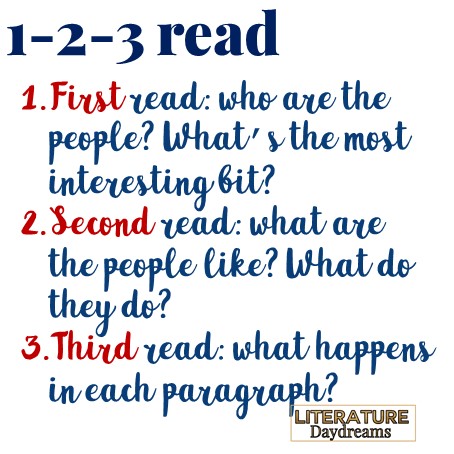
I start off by reminding students that a 500 word extract should only take about 2.5 minutes to read. I tell them, that because I love them and because it’s like “way old writing”, I’ll give them 3 minutes.
And what do you find? That despite not knowing what the word ‘felicity’ means – students have understood what happens in each paragraph. This particular extract from Sense and Sensibility is perfect for this exercise (and guess what – shhh – you can download it as a freebie here).
So now we know what is going on in the extract – we can flip back and do some word work. This is absolutely vital before we do any close analysis. It would be very easy to treat this as another dictionary task, but one issue with 19th century literature is the use of language that has slipped outside of everyday usage. Students need to grapple with these words for themselves before they can interpret another writer’s use.
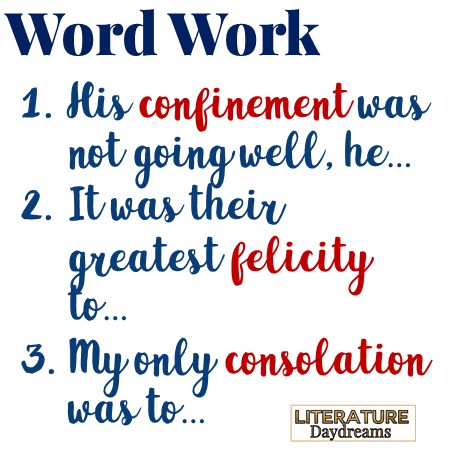
For me then this word work is 2 phrase: first the dictionary work to define and then second to use these new words (or reframed words) in their own writing. The examples above are sentence starters that I give students using the vocabulary. I do this because with this students are more likely to use language correctly with this additional support, than if asked to just come up with their own idea.
The final area we really focus on when studying 19th century literature is syntax and sentence structure. For us in the modern age, the event of modernism, saw a revolution in sentence structure. Authors rejected the highly embellished writing of their predecessors. Modern writers use shorter sentences and fewer clauses. Students can find reading the long sentence types seen in 19th century literature a challenge. So I turn it into a puzzle or a scavenger hunt.
By teaching the syntactical structures, such as polysyndeton, cumulative, and periodic sentences, students can make sense of what they are reading, and find ways to explain its purpose.
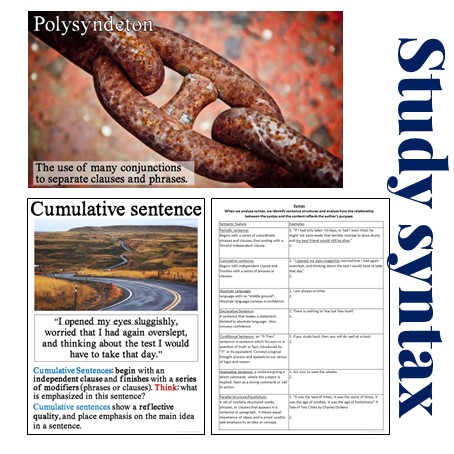 For my Maths and Science boys – literature becomes a literal puzzle, one that they can define, measure, and explain with more ease.
For my Maths and Science boys – literature becomes a literal puzzle, one that they can define, measure, and explain with more ease.
I hope these hints and tips will help you make 19th century literature come alive in your classroom. If you are interested in my resources to help deliver these ideas in your classroom please see the links below!